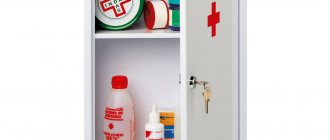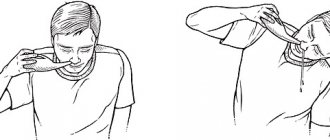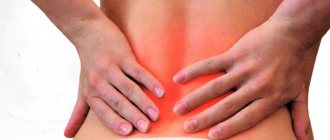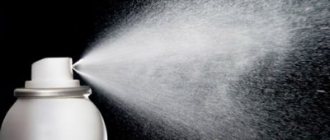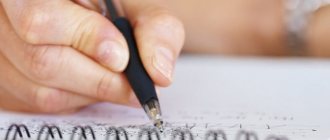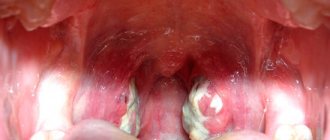Human health largely depends on the cleanliness of its internal organs. You can treat hemorrhoids, liver, kidneys and a huge number of other diseases with various pills for years without getting any tangible results. But once you start cleansing your colon, the results will appear in no time. Starting with the fact that the same hemorrhoids can completely disappear, the skin will begin to cleanse, metabolism will normalize and many more positive changes that you can feel for yourself.
All these positive changes in health can be achieved by such a seemingly simple procedure as an enema. As simple as it is, it is as effective. It has been known since the time of Hippocrates. It has been and is successfully used in oriental medicine. Modern medicine also recognizes its healing effect.
What is she? This is a cleansing procedure aimed at cleansing the intestines using liquid introduced into the rectum. Thanks to this, the intestines are perfectly cleansed and the person receives a healing effect.
In what cases is it recommended to use? It will be useful in the following cases:
- constipation, stool retention;
- intestinal obstruction;
- during pregnancy before childbirth;
- for poisoning and intoxication;
- during therapeutic fasting to avoid intoxication;
- in cases where administration of drugs through the rectum is required.
What is important is that it is produced without anyone’s help, independently at home, it is simple and safe. However, you should not carry it out thoughtlessly, without knowing your exact diagnosis, relying only on your assumptions. Therefore, in the question of how to give yourself an enema, you need to follow the simple rules that are described here.
Preparation
Prepare the following tools and necessary supplies:
- two large towels;
- a teaspoon of any natural oil;
- two liters of warm boiled water.
The procedure should be carried out in a warm, comfortable place, closer to the toilet. Before doing an enema, try to time it so that no one disturbs or distracts you. For a reservoir with liquid, you need to prepare a stand 1.5 meters high. Lubricate the tip and anus with oil. Let's start the procedure.
Therapeutic enema: cleansing manipulation
The main purposes of the enema:
- provoke the urge to have a bowel movement;
- empty the intestines of feces during constipation.
Sometimes this procedure is carried out in the form of a cleansing course for the body, even in the absence of constipation.
In addition, there are some types of abdominal examinations that require the administration of a contrast agent. In this case, the contrast liquid is injected into the intestines some time after the cleansing procedure.
You can use baking soda for cleaning. Read how to take soda to cleanse the body according to Neumyvakin here.
DOCTORS RECOMMEND!
Patients who want to get rid of helminths often ask for natural remedies with the least side effects. In such cases, I recommend this drug.
The product paralyzes, removes parasites and destroys their eggs. Helps cleanse organs and tissues, neutralizes intoxication throughout the body.
Possible complications and consequences
The procedure is carried out very carefully, as prescribed by the doctor, otherwise, instead of recovery, you can do a lot of harm.
- You should not give an enema often. The intestines will be “offended” and will not want to cleanse themselves. Enemas and laxatives contribute to the development of “lazy bowel” - a pathology that occurs due to weakened intestinal motility.
- The procedure helps cleanse the intestines not only of feces and gases, but also of beneficial microflora. And it is necessary for complete digestion and absorption of food. It has been proven that beneficial microflora helps strengthen the immune system. And without it, pathogenic microorganisms will begin to multiply in the intestines.
- If you insert the syringe incorrectly, you can damage the intestine. At best, a small wound will appear on the mucous membrane, at worst, a rupture will occur, and the entire contents of the intestine will fall into the abdominal cavity. Peritonitis will develop. Urgent surgery will be required.
- If there is no bowel movement after a certain time, intoxication may occur. Since harmful substances will dissolve and begin to be absorbed.
- When a large amount of fluid is administered, especially with pathologies of smooth muscle tissue, stretching of the intestinal walls will occur. The pressure inside the lumen will increase. This will lead to additional irritation and exacerbation of the pathological process.
We recommend reading:
Volvulus (intussusception): symptoms, causes and treatment
Therefore, before carrying out the procedure, compare the benefits and harms of an enema.
How to give yourself an enema at home?
An enema is a fairly simple procedure and does not necessarily require a hospital stay. Knowing some simple rules, you can give an enema at home, both to another person and to yourself.
Preparation
Preparing for an enema:
- Solution for administration. If a special medicinal composition is not prescribed, then ordinary water, preferably filtered or boiled, is used for the enema. The quality of water is important because both beneficial and harmful substances are absorbed into the blood through the intestinal walls.
- The temperature of the solution should be between 38-39 degrees. A solution that is too cold can cause spasms and pain; a solution that is too hot can injure the mucous membrane.
- Esmarch's mug is a special device for enema procedures. Instead, you can use a regular heating pad or pear. Pears have a smaller volume and are usually used for children.
- Vaseline or vegetable oil to lubricate the tip.
The procedure for performing the manipulation
Procedure for administering an enema:
- Choosing a location. You can give an enema in the bathroom or while lying in bed. The bathroom is less comfortable, but more aesthetically pleasing. To prevent it from being slippery and cold, you can lay a towel or rubber mat on the bottom of the bathtub. It will be more convenient to take a suitable position and lie more comfortably in bed, but the sheets risk getting wet and dirty.
- Position selection. The classic position for an enema is lying on your left side with your knees bent. But some recommend performing the procedure on all fours, or lying on your back with your pelvis raised. When choosing a pose, it is better to focus on your own feelings.
- Esmarch's mug with a pre-prepared solution is installed at a sufficient height so that water from the hose can flow freely. At home, you can hang this device using improvised means.
- The tip must be lubricated with Vaseline. You should relax and carefully insert it into the anus, and then open the clamp. The solution will begin to flow into the intestines. It is recommended to retain water in the intestines for 6-10 minutes. When the urge becomes unbearable, you can go to the toilet.
- The introduction of the solution should be accompanied by a feeling of abdominal filling and mild discomfort. If severe pain or cramps occur, you should stop the flow of water into the intestines.
- After the enema, you need to thoroughly wash and disinfect all accessories.
How to carry out the procedure
An enema should be given only as prescribed by a doctor. The specialist will recommend which solution will be most effective, to what temperature it should be heated or cooled, and how much to administer.
Stages of the procedure:
- Wear sterile gloves.
- Lubricate the tip of the syringe and the anus with Vaseline.
- Lie on your left side, tuck your legs and bring them to your stomach. At the same time, manage to spread the buttocks with one hand, while holding a napkin near the anus, and insert the syringe with the other.
- The tip should enter the anus to a depth of 10–12 cm. Insert it carefully, using rotational movements.
- Slowly press on the balloon bulb and pour in its contents. You should not sharply squeeze the syringe, as strong pressure of liquid can damage the intestine. If you feel strong pressure or acute pain, stop the procedure immediately and seek medical help.
- The pear should be removed from the rectum carefully.
- Use a napkin to wipe the skin from the perineum to the anus.
- Close the buttocks tightly, carefully pull out the oilcloth with the diaper.
After administration, you should lie down on your left side for 10 minutes. Then roll over onto your right side. You should breathe with your stomach. This will help move water into the intestines. After an enema, you need to lie down for at least 20–30 minutes (except for an oil enema).
In case of anal fissure, the procedure must be carried out extremely carefully. An enema is given as many times a day as the urge to defecate occurs. The tip is inserted into the anus along the edge of the anus on the side opposite to the fissure.
Immediately after bowel movements, a bath with potassium permanganate is necessary. Then a suppository lubricated with novocaine, streptocide and zinc ointment is introduced.
To cleanse the intestines of toxins, the following scheme is recommended:
- Day 1 – before bedtime, 0.5 liters of liquid are administered;
- Day 2 – 1 liter of solution is administered;
- 4th day – 1.5 liters required;
- Day 7 – give a 2 liter enema.
On days 3.5 and 6 they take breaks. They are needed to prevent intestinal motility from being disrupted.
To administer large volumes of liquid, it is better to use an Esmarch mug, since the maximum volume of a syringe is about 0.5 liters. And administering an enema several times in a row will further irritate the intestines.
Enema bulb - selection and use
The pear is used for enema in the following cases:
- when it is necessary to introduce a small volume of liquid into the intestines - up to 0.5 liters;
- use for children.
Pears come in a variety of sizes, starting from 50 grams. For a full-fledged enema for an adult, Esmarch's mug is definitely the best option.
The undeniable advantage of the pear is its ease of use. The solution is drawn up in one movement and is just as easy to administer. The only rule for caring for a pear is that it should always be clean and sterile before use.
Esmarch's irrigator
This reusable, easy-to-use, heating pad-like device should be in every home. With the help of Esmarch's mug, you can easily and effectively give enemas and do douching.
It is filled with the prepared composition and suspended to a height of about 1.5 meters (so that the hose does not have bends). Before turning off the tap, you need to release all the air from the hose. Otherwise, air will begin to escape after the tip is inserted into the intestine, which will cause discomfort and pain.
Which is better: Esmarch's mug or pear?
The pear is convenient to use when administering a small amount of liquid up to half a liter, which is important for a child. To carry out a full procedure for an adult, if more liquid is required, it is better to use an Esmarch mug. For independent use, take a bulb; it is easy to use and one slow press is enough to introduce all the liquid.
To manipulate the mug, you will need outside help; you will need to hold it at a height of up to 1.5-2 m. You will need to regulate and deflate the air using a faucet, which is impossible when used independently.
To carry out cleaning at home yourself, a rubber bulb will do the job better. You should not overuse an enema; it can cause a decrease in peristalsis and leaching of beneficial microflora, which leads to chronic constipation. Reasonable use will improve the body without harm to health.
The article was approved by the editors
Can't deal with parasites?
Helminths are dangerous to the body; their waste products are toxic and provoke inflammatory processes where they live.
Treatment should be started immediately! Protect yourself and your loved ones!
In such cases, our readers recommend using the latest remedy - Tibetan collection TIBETTEA against parasites.
It has the following properties:
- Kills more than 120 types of parasites in 1 course
- Has an anti-inflammatory effect
- Breaks down and removes eggs and larvae of parasites
- Destroys pathogenic bacteria and viruses
- Removes waste and toxins
Question answer
When is it better to do an enema in the morning or evening?
Maximum intestinal activity is observed at 5–7 am, at this time it is recommended to carry out all cleansing procedures - they need to be done on an empty stomach. You can give an enema in the evening - 3-4 hours after eating, 2-2.5 hours before going to bed. The least favorable time is 17–19 hours.
What kind of water should I use for an enema?
Regular tap water is not suitable; it must be brought to a boil and cooled. The optimal water temperature is 37 degrees, boiling water is absorbed in the intestines, does not dissolve harmful substances, and cold water can provoke spasms.
Which side do you lie on for an enema?
Cleaning of feces should be done while lying on your left side, your knees should be bent and pulled up to your stomach - this position is associated with the structural features of the intestines. Being in the same position only on the right side, the solution will enter the rectum and sigmoid part of the intestine, which are located to the left of the anus - the liquid will quickly flow back, which will reduce all efforts to zero. If it is not possible to lie on your side, the procedure can be performed while lying on your back.
When performing a cleansing enema, the patient should lie on his left side
How to disinfect an enema?
Enema products should be disinfected after purchase and each use. The Esmarch mug or syringe should be rinsed with warm water for at least 3 minutes. Prepare a solution of 1.5 liters of water and 25 g of soda, boil the rubber parts for half an hour, rinse again with running water, boil the products in clean water for 25 minutes. The tip should be immersed in hydrogen peroxide for a quarter of an hour.
Disposable Esmarch mugs are sterile and should be thrown away after use.
Disposable Esmarch mugs are thrown away after use.
Enema exercises
To make the cleansing procedure as effective as possible, you need to do simple exercises. At the initial stage, you should slowly draw in your stomach and breathe through your diaphragm.
Effective exercises:
- When the intestines are filled with the solution, you need to lie on your back near the wall, raise your legs and buttocks, and fix the position for a few minutes.
- Take a lying position, rest your heels against the wall, relax your stomach, stay in this position for 5-7 minutes.
- Lying on your right side, so that the solution can penetrate into all parts of the intestine, lie down for 2-3 minutes.
If you have hypertension, you cannot do a stand with your legs raised; after breathing exercises, you should immediately lie down on your right side.
Effective exercises for performing an enema
Does it hurt to do an enema?
The procedure is unpleasant, but painless; discomfort occurs most often due to psychological discomfort, severe muscle tension, or too cold a solution. If severe pain occurs during cleansing, you should consult a proctologist and undergo additional examination.
Laxative enema for constipation
Which enema solution to use for constipation depends on the condition of the intestines.
If there is inflammation or infection, it is better to avoid saline solutions: they will only aggravate irritation and cause pain. In such cases, oil enemas are indicated, which envelop the mucous membrane with a protective film, helping the tissues regenerate. A chamomile enema has a similar effect, eliminating swelling and inflammation.
So, laxative enemas for constipation:
- Cleansing enema. Boiled water at a temperature of 36-40 degrees is used.
- Oil enema. Vegetable oil (50-100 ml) is heated to a temperature of 38°C, you can use petroleum jelly. If an enema with castor oil is prescribed, then 2-3 tbsp. spoons are stirred in 100 ml of water.
- Hypertensive enema. 30 grams of magnesia powder (30% solution) are dissolved in 100 ml of water.
- Saline enema. 1 tbsp. salts are stirred in 100 ml of boiled water. The solution is administered using a syringe. It happens that half the prepared volume is enough.
Stories from our readers!
“It’s unpleasant to realize that parasites live inside you. I want to get rid of them as soon as possible. We first learned about the drug from the Internet and decided to try it with my husband. We have 2 dogs and a cat at home, and we regularly take preventive measures against helminth infection. We really like the product because it is completely natural, and this is important for prevention.”
Enema solutions
Various solutions are used for cleansing enemas. The liquid temperature should be 22–23 °C, or 36–38 °C. The cold solution enhances intestinal motility and is prescribed for atonic constipation. Warm – relaxes, relieves spasms. If it is necessary to cause severe intestinal irritation, it is recommended to use liquid cooled to 12–20 ° C.
Prescribed solution:
- saline;
- soda;
- herbal;
- oil;
- emulsion;
- potassium permanganate.
Even boiled water is used for enemas.
Which solution to choose depends on the disease and the purpose of the prescribed procedure.
Saline
Hypertensive enemas effectively cleanse the intestines. They help remove a larger volume of fluid, soften stool, stimulate the release of loose stools, and enhance intestinal motility. Apply:
- 10% sodium chloride solution (10 g of table salt per 100 g of water);
- 20–30% solution of magnesium sulfate;
- 20–30% sodium sulfate solution.
We recommend reading:
Methods for improving intestinal motility: drugs, diet and exercise
The procedure requires 100 ml of solution. It is heated to 37–38 °C. After administering the liquid, it is not recommended to stand up for 20–30 minutes.
It is contraindicated for ulcers, anal fissure, acute inflammation of the lower part of the large intestine, and edema.
Soda
Soda solution is prescribed for increased acidity of stool. It helps relieve pain caused by irritation of the intestinal mucosa with liquid feces during diarrhea. It is believed to be effective in the treatment of helminth infections. Recommended for cleansing the intestines with acetonemia.
To prepare the solution you need:
- 1.5 liters of water;
- 50–60 g of soda.
Sodium bicarbonate is dissolved in warm water. To cleanse the intestines, 1–1.5 liters of liquid are administered. The solution temperature should be 37–38 °C.
Herbal
Herbal infusions are recommended for cleansing enemas. Prescribed:
- Melissa infusion. Crushed shoots (3 g) are poured with a glass of boiling water and left for 20–30 minutes. Strain thoroughly. A warm solution (37–38 °C) should be administered. This enema relieves spasms.
- A decoction of flaxseed (oats, barley) and mallow leaves. The collection (1 tbsp) is poured into 1 liter of water. Boil for 10 minutes, filter, add 1 tbsp. l. salt, 2 tbsp. l. oil (linseed, hemp). I use this enema as a laxative for chronic constipation.
- Chamomile decoction. Chamomile flowers (6 tablespoons) are poured into 0.5 liters of boiling water. Place in a water bath and boil for 15 minutes. Allow the broth to cool, filter, and squeeze out the remaining raw materials. Add boiled water to the resulting broth to a volume of 0.5 liters. Add 2 tbsp. l. honey. This solution not only cleanses the intestines, it is anti-inflammatory and antibacterial.
Read more: Using herbs to cleanse the intestines
Decoctions should be prepared in enamel containers. It is better to buy plant raw materials at a pharmacy or collect them yourself (away from railways, roads, and factories). It is strictly not recommended to buy herbs by hand, as they could have grown in contaminated areas and harmful substances have accumulated in them.
Herbal enema solutions should be used only as prescribed by a doctor and with extreme caution - they cause allergies.
Oil
Used to empty the lower part of the colon from feces and gases during spastic constipation, in the postoperative period, after childbirth. This is a long-acting enema. After it you should lie down for at least 8 hours. Therefore, it is better to put it before bed (the act of defecation should occur in 10–12 hours).
The oil has the following effects:
- Mechanical. The solution penetrates between the feces and the intestinal walls. The feces soften and are easily excreted.
- Chemical. The oil in the intestines is partially broken down and saponified. It relieves spasms and helps restore normal peristalsis.
To prepare the solution, take 100–200 ml of vegetable oil (linseed, hemp, sunflower, corn). It is heated to 36–38 °C.
An oil enema is prescribed for a gentle cleansing of the intestines, when it is undesirable to strain the muscles of the perineum, abdominal wall, or strain. Its contraindications are the same as for all types of enemas.
Emulsion
It is recommended for seriously ill patients. Prepare an emulsion enema as follows:
- Prepare 0.5 ml of chamomile infusion. Chamomile flowers (4 tbsp) are brewed in 0.5 liters of water. Strain, squeeze out the remaining residue, add water to a volume of 500 ml.
- Take 1 yolk. Beat thoroughly. Add 1 tsp. baking soda.
- The yolk is mixed with chamomile decoction. Add 2 tbsp. l. Vaseline oil or glycerin.
We recommend reading:
How to give an enema yourself for constipation: performing the procedure at home
When using an emulsion enema, bowel movement occurs within half an hour.
Potassium permanganate solution
For an enema, use a slightly pink solution of potassium permanganate. 4–5 crystals of potassium permanganate are dissolved in 1.5 liters of water heated to 36–38 °C. A more concentrated solution, instead of benefit, will cause irreparable harm (burn of the mucous membrane).
An enema with potassium permanganate is prescribed for treatment:
- diarrhea;
- hemorrhoids (if there is no bleeding).
To cleanse the intestines, it is better to use other solutions, since potassium permanganate dries out the mucous membrane and causes additional irritation.
Composition of a cleansing enema for weight loss at home
There are several proven recipes for enemas for weight loss.
Here are the most common ones:
- Lemon juice enema. Add 50 ml of lemon juice to 1 liter of water at the required temperature. It is advisable to squeeze the juice yourself from fresh citrus, rather than using store-bought juice. This solution normalizes the intestinal flora, eliminating toxins and harmful substances.
- Enema for weight loss with vinegar. 1 tbsp. apple cider vinegar is diluted with 2 liters of boiled water. This enema should be given no more than once a week so as not to harm the body. Course of application – 3 months.
- Soda enema. 1 tsp soda for 1 liter. water. An enema effectively cleanses the intestines of accumulated deposits, promoting weight loss. You can use a soda enema maximum once a week.
Enema contraindications
Despite all the benefits of cleansing enemas, it is important not to forget about its contraindications. During intestinal cleansing, dysbiosis often develops; to avoid this, you should take probiotics.
When not to give an enema:
- colon prolapse;
- migraine, dizziness, nausea;
- viral pathologies in the acute stage, elevated body temperature, febrile conditions;
- cracks and bleeding that appeared against the background of advanced hemorrhoids;
- benign and malignant neoplasms in the colon;
- peritonitis, appendicitis;
- violation of the integrity of the intestinal mucous membranes;
- internal bleeding in the organs of the digestive system.
You can’t do an enema for anal fissures
Using an enema during pregnancy is dangerous - during the procedure, intestinal peristalsis increases, which can provoke hypertonicity of the uterus, since the organs are located close to each other.
Important!
Frequent use of enemas can lead to lazy bowel syndrome.
Types and purposes of enemas
Types and purposes of enemas:
- Cleansing enema. It is used to wash the intestines for constipation or before surgery; the solution is not absorbed.
- Therapeutic enema. Aimed at introducing medications into the blood through the colon. Usually in this case microenemas are used (a small volume of medication is administered), the solution is absorbed within half an hour or more.
- Siphon enema. Used for deep cleansing of the intestines from toxic substances. Up to 20 liters of water are introduced into the intestines in parts. It has many contraindications and is stressful for the body, but in some cases the use of a siphon enema is completely justified.
- Oxygen enema. Instead of a solution, with such an enema, oxygen is introduced into the intestine in small portions. This type of enemas is used in the treatment of helminths, since they do not tolerate high concentrations of oxygen.
- Ognev's enema. It is used for paralysis of the large intestine and complete atony. The composition of such an enema includes 20 ml of hydrogen peroxide (3%), glycerin and soap solution. It has a strong irritant effect on the intestinal mucosa and is prescribed in exceptional cases.
- Glycerin and soap. The purpose of such enemas is to stimulate intestinal motility and is used for severe forms of constipation. Glycerin in its pure form is used extremely rarely; the solution mainly consists of a mixture of soap and glycerin.
Based on temperature, enemas are divided into:
- cold;
- cool;
- warm;
- hot.
Each type is used in special cases, for different diseases.
In what cases is a cleansing enema required?
A cleansing enema is carried out by injecting a large volume of liquid into the intestines (at least 1 liter, and usually 2 liters) in the following situations:
- before an X-ray or ultrasound examination of the intestine, so that feces do not complicate the diagnosis;
- for constipation for the purpose of mechanical cleansing of the intestines and reducing unpleasant symptoms;
- on the eve of surgical interventions, since after anesthesia, intestinal atony is observed for several days;
- before childbirth;
- in case of severe intoxication;
- before administering a medicinal enema.
Contraindications
An enema is a fairly mild procedure and does not necessarily require a doctor’s prescription or supervision.
But despite its relative harmlessness, the enema has a number of contraindications:
- Crohn's disease.
- Appendicitis.
- Rectal cancer.
- Acute peritonitis.
- Inflammatory processes in the intestines.
- Erosion and ulcers of the intestinal mucosa.
- Gastric and intestinal bleeding.
- Severe cardiovascular failure.
Vaginal douching is contraindicated in the following cases:
- Pregnancy.
- The first weeks after childbirth, abortion, operations.
- Menstruation.
So, an enema is a fairly universal method of getting rid of many ailments. You shouldn’t get too carried away with it: abuse of this method of cleansing the intestines can disrupt the microflora and suppress natural peristalsis, which can lead to chronic constipation. However, with a reasonable approach, the use of enemas will only bring health benefits.
What is an enema for?
Most often, an enema is used for long-term constipation, when bowel movements do not occur for 2-3 days. The method of emptying also helps to cope with diarrhea. The procedure is used to get rid of excess weight, improve skin condition, and its effectiveness is recognized by official and alternative medicine.
Indications for the use of enemas:
- weakness, chronic fatigue, skin rashes and other signs of accumulation of toxins and toxic waste in the body;
- bad breath that is not associated with dental problems or respiratory diseases;
- reducing the load on the intestines during a diet or therapeutic fasting;
- frequent colds;
- cleansing should be carried out before surgical interventions and childbirth, ultrasound of internal organs;
- severe intoxication due to poisoning;
- flatulence, bloating, belching, heartburn.
Enema helps with flatulence
After the cleansing course, stool improves, the blood is cleansed, overall health improves, migraines go away, and blood counts stabilize. Cleansing the intestines has a beneficial effect on the condition of hair and skin, and improves joint mobility.
Colon cleansing with enema before childbirth
The procedure, done before the woman is taken to the hospital, will allow her not to worry about involuntary bowel movements during pushing. Cleansing with an enema also promotes better tone of the uterus, accelerating the natural process. In this case, the day after childbirth there is no need to defecate. For a home enema in less than five minutes, the woman in labor needs the help of loved ones.
How to do an enema? 1.5-2 liters of boiled water is poured into Esmarch's mug (you can use chamomile infusion). The temperature is not higher than 37 degrees, the tip is lubricated with Vaseline, and all the air is released from the tube. When the solution runs out, the woman completely frees herself from it in the toilet. It is recommended to repeat the procedure in case of insufficient cleansing of the intestines no earlier than half an hour. When attempts begin, the enema is canceled.
Equipment
To carry out the procedure, rubber bulbs or syringes with tips are used, as well as Esmarch mugs of various configurations.
Rubber bulbs are used if the patient needs to have an enema with a relatively small volume of injected solution - from 30 to 600-700 ml. The size of the tool is selected individually. Often the procedure is required for very young children. How to properly give an enema to a child? For babies, bulbs with soft tips, also called syringes, are more often used. They cause less damage to the delicate mucous membrane of the rectum. For adults, it is preferable to use bulbs with hard tips that can be easily sterilized. There are special intestinal nozzles that are inserted deeply, which reduces the urge to defecate and prevents untimely release of contents when administering medicinal solutions.
Esmarch's mug is a complex system of a 1.5-2 liter rubber, metal or plastic container, an outlet tube with a clamp and tips. The neck of the container is tightly screwed on with a lid. The clamp is necessary to regulate the speed of introduction of solutions into the rectum. The set may contain two types of tips: soft and hard. Disposable Esmarch mugs are available without a tip. This instrument is used to introduce large amounts of fluid into the body.
Many patients can perform the procedure outside of a medical facility, but quite often they are not informed about how to properly perform an enema at home.
Who is this procedure indicated for?
The main purpose of an enema is to cleanse the body of toxins that accumulate in the intestines. Sometimes the doctor may prescribe the procedure at home, after instructing the patient on how to properly perform an enema at home. Show procedure for doing it yourself:
- Adults and children suffering from constipation for more than 2 days.
- Before rectal examinations.
- Before starting therapeutic fasting.
- To cleanse the body in case of unfavorable general health.
It is very important to know how to properly do an enema before visiting a proctologist, since the results of studies: colonoscopy, X-ray and endoscopic examination depend on this. The procedure is carried out in the evening on the eve of diagnosis with a minimum volume of water of 1.5 liters, and also 2 times in the morning before going to the doctor. To improve the effect, you can take a laxative: castor oil, magnesium solution.
Classification
This procedure differs in its intended application, execution rules and tools used. Also, enemas differ depending on the reasons for the manipulation.
Cleansing enema
A cleansing enema at home is performed to remove feces from the intestines. Cleansing enemas begin to take effect half an hour after applying the medicinal solution. To carry out the procedure, you will need an Esmarch mug.
It includes a rubber reservoir, which has a tube with a locking mechanism and tips (hard and soft).
Hypertensive enema
What products strengthen the chair?
This procedure is indicated for constipation, which is caused by diseases of the rectum. To perform the session, a rubber bulb equipped with a plastic tip is used. Using this device, a hypertonic saline solution or a magnesium-based agent is injected into the intestinal lumen. Thanks to this, it is possible to increase the osmotic pressure.
As a result of such manipulations, it is possible to liquefy stool and activate peristalsis. At the same time, the emptying process is significantly improved. The result of this procedure is achieved 7 minutes after using the solution.
Oil enema
An oil enema will help to cleanse the distal parts of the intestines. For this, warm oil solutions are used. As a result, the stones are coated with an oily substance, making them more elastic. Warm liquid eliminates intestinal spasms and makes defecation easier.
A rubber bulb is used to perform the procedure. It is given before bedtime, since the enema solution at home acts slowly. Intestinal cleansing is achieved only after 9 – 12 hours. This type of enema at home is also used for inflammation of the rectum.
Benefits and harms
Many people have questions about whether it is harmful to do an enema and how beneficial it is for health. Find out about all its advantages and disadvantages.
Esmarch's irrigator
Benefit
- A budget way to lose weight and cleanse the intestines: no need to buy expensive drugs;
- accessibility of the procedure: despite all the warnings and medical orientation, you can give yourself an enema at home;
- medications are absorbed into the blood faster without loading the liver;
- treats insomnia;
- normalizes digestion, which contributes to some extent to weight loss, since fats are not stored as reserves, but are used for energy;
- has an anthelmintic effect;
- weight loss;
- reduces appetite - another bonus for those who want to lose weight;
- strengthens the immune system;
- improves well-being, relieves discomfort, heaviness, and cramps in the stomach;
- reduces intoxication, reduces the absorption of poisons into the blood;
- corrects the volume of the abdomen;
- eliminates constipation;
- This is a useful procedure for cleansing the intestines of waste and toxins.
Harm
- Along with harmful substances, useful substances are also actively removed from the body - vitamins, microelements, which causes the work of many internal organs to become disrupted and metabolism to slow down;
- there is a risk of poisoning by fecal breakdown products when they are dissolved in water;
- due to excess warm liquid, the water-salt balance is disturbed;
- intestinal microflora is disrupted;
- if administered incorrectly, it injures the anus, causes pain, and leads to hemorrhoids;
- With frequent enemas, the intestines get used to them, relax, and stop working normally, which can lead to difficult bowel movements in the future.
So the enema is a two-faced Janus. On the one hand, it can be very useful (if the intestines are really clogged). On the other hand, it puts the body into a state of stress and often has not entirely pleasant consequences for health. If for you personally its advantages outweigh the disadvantages and you have indications for such cleaning, just learn how to do it correctly - and enjoy the results.
Why do a colon cleanse?
A healthy intestine copes with bowel movements on its own, without outside interference. The method of cleansing the intestines with an enema is used to diagnose and treat diseases, as well as to alleviate the general condition of the body. An enema is necessary in the following situations:
- prenatal preparation of a woman, especially if there is a need for a caesarean section;
- the postpartum period, in which there is weakness in intestinal motility;
- preoperative preparation before intervention on the abdominal organs;
- before conducting an examination of the pelvic and intestinal organs (ultrasound examination, colonoscopy and others);
- in the treatment of long-term constipation, in combination with proper nutrition and medications;
- to reduce symptoms of body intoxication;
- on diets for weight loss;
- for the administration of certain medications that exert their effect specifically in the large intestine.
This procedure is done for frequent constipation in order to quickly cleanse the intestines, because the effect of medications occurs after a few hours. An enema does not evoke pleasant associations, but if such a need arises, then at home all negative aspects can be minimized. Having mastered the necessary skills, you can even perform a deep intestinal lavage using up to 4 liters of liquid.
Soda solution
Another question that is worth considering is how to give a pear enema to a child and an adult using a soda solution. It is usually prescribed for use in cases of excessive acidity of stool. It helps relieve pain caused by irritation of the intestinal mucosa by masses of feces. It is characterized by a high level of effectiveness in the presence of helminthiasis or acetonemia.
To prepare it, you need to combine 1.5 liters of water and 50 grams of soda. The solution must be heated to a temperature of 37-38 degrees.
Recipes
One of the most important questions is what an enema is used with. The classic option without any tricks is warm, clean, always distilled water. However, if there are certain problems, you can select appropriate recipes to eliminate them along the way. Healing solutions with herbs, oils, and disinfectants can save you from many troubles.
- Oily
Oil enemas are very popular and useful for cleansing the intestines. They soften stool and facilitate easy bowel movement. The best oils are:
- castor oil – eliminates constipation, gets rid of bacteria, parasites, fungi, treats inflammatory processes in the abdominal organs, helps with ailments;
- olive – used for constipation;
- sea buckthorn - has a wound-healing effect, is used in the presence of cracks in the anus, hemorrhoids, ulcers;
- flaxseed – gets rid of worms, treats heartburn and gastritis.
Recipe No. 1. Take warm oil into a pear and insert it into the anus (100 ml will be enough).
Recipe No. 2. Mix 50 ml of oil with 100 ml of water. Inject using a bulb.
- Saline
A salt enema is very good for cleansing the intestines. Prepare according to the following recipe: dissolve 2 tablespoons of sea or table salt in 2 liters of water. The famous healer G.P. Malakhov suggests adding a little lemon juice.
- With potassium permanganate
It has a disinfecting effect and is possible even with hemorrhoids, which, in principle, is a contraindication for this procedure. It is also recommended to make it with a pear, since the volume will be minimal - just a glass of a solution of a soft pink hue. The main thing is not to overdo it with color, otherwise you can burn the mucous membrane.
- On herbs
Pour 500 ml of boiling water over a tablespoon of crushed raw materials. Leave for an hour, strain. Herbal enema has excellent cleansing properties. Among the medicinal plants you can use chamomile, celandine, sage, St. John's wort.
- Coffee shop
Pour 50 grams of ground coffee into 500 ml of boiling water, heat in a water bath for 15 minutes. It acts softly and delicately. Removes toxins, poisons, chemicals, stimulates the functioning of internal organs.
- Soda
In a glass of boiled water over low heat, gradually add 10 grams of baking soda in pinches. Bring to 40 °C, remove from heat. Do it daily for a week. During this time, stick to a light diet. Eliminates gas formation, normalizes water balance, gets rid of parasites, and reduces weight.
https://youtu.be/BArC2EreaTg
- Lemon
Dilute the juice of 2 lemons in 2 liters of warm boiled water. It improves metabolism, normalizes the functioning of organs, supports beneficial microflora in the intestines, softens stool, and cleanses of toxins and chemicals.
- Garlic
Crush 1 medium-sized clove of garlic, add a glass of warm water, and leave for a couple of hours. Strain. Warm slightly before administration. Gets rid of worms (pinworms, roundworms). The course of treatment is 7 days.
- Beetroot
Mix half a glass of freshly squeezed beet juice and warm water. It has the most gentle effect, but at the same time has a powerful laxative effect. It is recommended to do it every other day.
It is difficult to say which enema is best for cleansing the intestines, because this issue is very individual and does not have a standard solution. Each of them has its own pros and cons. Some people are delighted with salt, while others prefer the effect of potassium permanganate. So decide for yourself what solution you will use, based on the state of your own body and personal preferences. You may have to try more than one recipe before you find the one that turns out to be most useful in your case.
How to give an enema to a child?
It is prohibited for children to undergo this procedure without the knowledge of the doctor. Pediatricians prescribe an enema to young patients for persistent constipation, poisoning, or for drug therapy. In each case, the composition of the solution is prescribed. The size of the rubber bulb is selected according to the weight and age of the child: up to 6 months - from 30 to 60-70 ml; 6-12 months – 120-150 ml; 1-2 years – 180-200 ml; 2-5 years – 300 ml; 5-9 years – 400 ml, from 10 years – 0.5 l. High school students are allowed to use a liter bottle.
- To give an enema, an oilcloth is placed under the child. The temperature of the liquid is adjusted to the child’s body temperature. Sharp injection of the solution is not allowed.
- During an enema, an infant's legs are raised so that when he pushes, he does not push out the solution.
- After the procedure, the baby needs to lie down for about half an hour, and then go to the potty (or to the toilet).
Cautions
A homemade enema is not the best option for colon cleansing. During use, mechanical damage to the tissues of the anus and rectum, thermal burns, and excessive stretching of the intestinal walls, even to the point of rupture, cannot be ruled out. Some of the complications pose a direct threat to human life, therefore, unless absolutely necessary, it is not recommended to use an enema from improvised means.
In order to avoid the need for an enema to facilitate bowel movements and cleanse the intestines during constipation, it is recommended to carry out preventive measures. They allow you to normalize stool and include a rational diet and physical activity.
https://youtu.be/cK1AXlU0byc
Preparation for the procedure
If a person needs to undergo an enema, careful preparation should be carried out. Before and after the procedure, you should follow a gentle diet. This means that you need to exclude spicy, fatty, fried, sour, and flour foods. Make sure that the water is 25–30 degrees, boiled in advance. Use a water thermometer to measure. When choosing the volume of liquid to be infused, you need to know your weight. Namely, the length of the circumference at the waist:
- from 35 to 55 cm. Half a liter of water will be required;
- from 55 to 75 cm. Need 1 liter;
- from 75 to 85 cm. You need to take one and a half liters;
- more than 85 cm – 2 liters of liquid.
To carry out the enema procedure, you must have the following components:
- colon cleansing solution;
- few hours;
- Esmarch's mug (syringe or combined heating pad);
- neutral lubricant for the tip. Allows for easier penetration of the syringe tip;
It is recommended to perform the procedure either early in the morning after waking up, or in the evening before going to bed. It is advisable to sterilize all elements necessary for the enema in advance. This must be done before the procedure, and, accordingly, after it.


